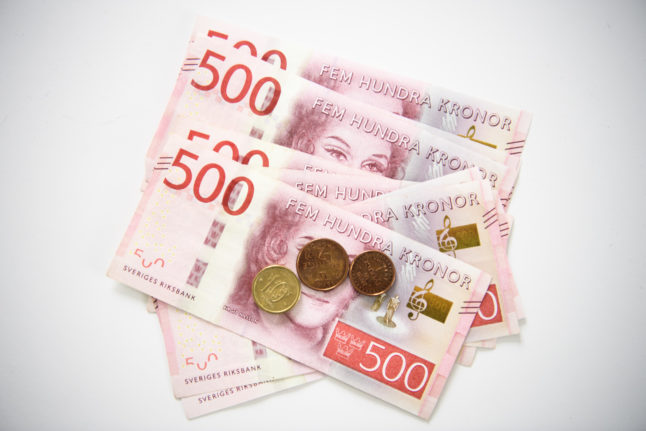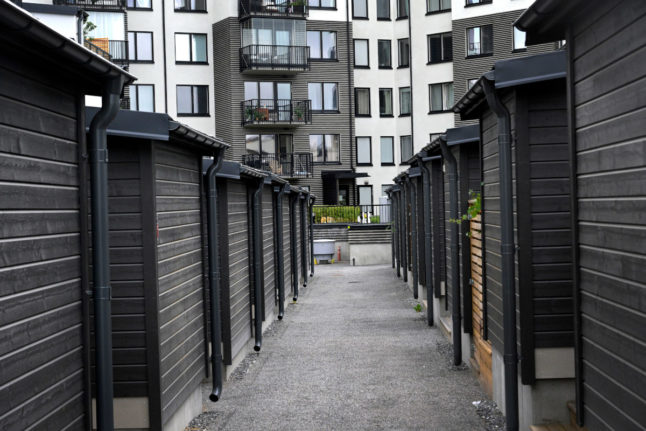US bank Silicon Valley Bank (SVB), a favourite bank to US tech firms and a well-known lender to start-ups, went bust earlier this year after being hit by a classic bank run, as its clients sought to withdraw $42bn in a single day, a quarter of its deposits. Signature Bank, another American bank, was shut down a couple of days later after suffering a similar bank run on the back of the SVB collapse.
So, what would happen if your Swedish bank went bust? Should you rush to withdraw all your money if your bank looks to be in a precarious situation? Here’s the situation in Sweden.
Deposit guarantee
You may not have realised this when you opened your Swedish bank account, but most bank accounts in Sweden are covered by the government’s insättningsgaranti or deposit guarantee. Simply put, this guarantee means that, if your bank goes bust, the state will foot the bill and refund your money.
Most Swedish banks are signed up to the deposit guarantee, but you can check whether your bank is included on this list.
How much money does it cover?
In 2023, the deposit guarantee is 1,050,000 kronor per person per bank, so you will get all of your savings back if they are under this figure.
Note that this is per bank, so if you have accounts in multiple banks you have a separate deposit guarantee for each bank, meaning your deposit guarantee could cover millions of kronor if you spread it out over more than one bank.
If you have a joint account, you’ll each have an individual deposit guarantee, so a couple sharing an account would be able to get 2,100,000 kronor of savings back if their bank collapsed.
It’s also possible to apply for an extra supplementary amount of up to five million kronor for deposits “coupled to certain life events,” the Swedish National Debt Office explains on its website, if you’ve sold a property, received a damages payout from a court case, or an insurance payout, for example. This can’t be applied for until you’re in a situation where a payout is due.
The guarantee applies to all private individuals (including children), as well as companies and other so-called “legal individuals”, such as the estates of deceased people, and it applies independently of any debts or loans you have with the bank in question.
Banks, municipalities, regions and government authorities are not covered by the guarantee.
How is it funded?
You may be wondering how the state is able to guarantee billions of kronor in the event that a Swedish bank fails. The answer is simple: the deposit guarantee is funded through fees charged to banks and other financial institutes which are then held in a fund.
The Financial Supervisory Authority has the power to decide when the guarantee should come into effect, and it also applies if the Swedish National Debt Office places a bank or other financial institute into administration.
Why does it exist?
The guarantee was originally introduced in the autumn of 1992, which was a turbulent time for the Swedish economy.
In order to stabilise the economy, the government introduced a general state bank guarantee, which in 1996 became a deposit guarantee covering 250,000 kronor per person per bank.
The idea behind the guarantee is to discourage people from withdrawing their money from a bank in crisis, thereby contributing to more stability in the financial system, as customers know they will get their savings back even if the bank eventually goes bust.
During the financial crisis of 2008, the guarantee was increased to 500,000 kronor.
Since 2010, new EU rules have meant that the deposit guarantee should cover an amount equal to 100,000 euros, with the amount in local currency adjusted every fifth year to match this number.
The last adjustment was in 2021, where the guarantee was raised from 950,000 kronor to 1,050,000 kronor.
How many times have payouts been made?
Payouts have been made three times since the deposit guarantee was introduced in 1992. The first two payouts were in 2006, when two financial institutes, Custodia AB and Almänna Kapital went bust.
In Custodia AB’s case, 1,282 affected customers were reimbursed with a combined 134.2 million kronor, and 287 of Almänna Kapital AB’s customers received a combined total of 40.9 million kronor.
The third payout was in 2010, when Danish bank Capinordic went bust. As this was a Danish bank with a branch in Sweden, the Swedish deposit fund paid the difference between the Swedish guarantee, which was 500,000 kronor at that time, and the Danish guarantee, which was 50,000 euros. This meant that 825 customers received a combined payout of 10.6 million Swedish kronor.



 Please whitelist us to continue reading.
Please whitelist us to continue reading.
What about ISK accounts held with a bank. Is that covered by the guarantee, or is that not part of the liabilities of a bank in the event of failure?
I read the kapitalförsäkring accounts are not covered by the deposit guarantee. Is there an equivalent or another regulation in place for this type of account?